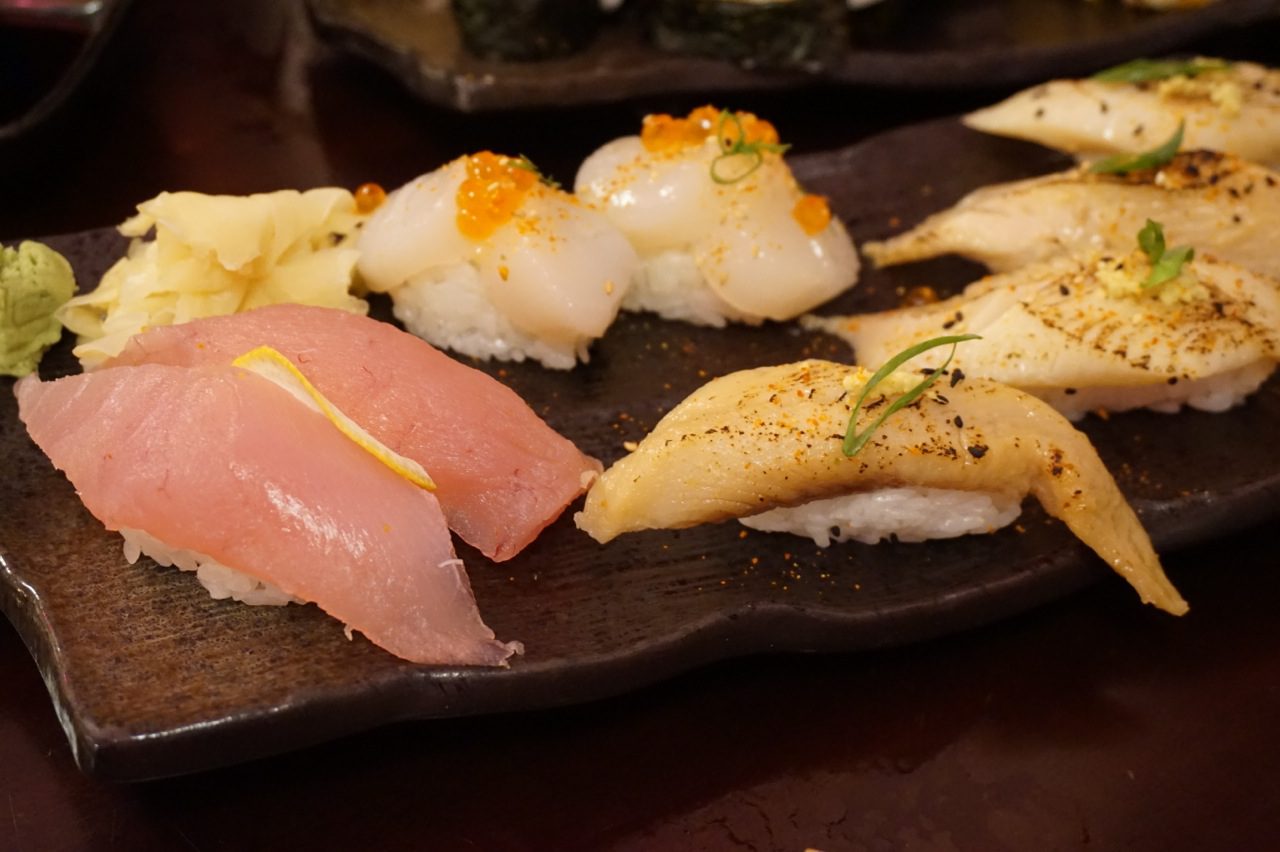Friday October 16, 2015

Like many fish biologists, our staff don’t just love studying fish – most enjoy eating them too. In particular, some of us have a strong penchant for sushi, and in honor of World Food Day today, we thought we’d spend some time talking about one of our favorite forms of “fish as food.” When it comes to savoring sushi, there are many options to choose from, and some choices can take a heavy toll on ocean fish populations. In particular, scientists estimate that bluefin tuna, one of the most popular sushi offerings, has experienced a decline of more than 96 percent from its historic levels. The Monterey Bay Aquarium recommends opting for albacore tuna instead to experience a similar flavor without the strong concerns of overfishing. The Aquarium produces a sushi version of their popular Seafood Watch consumer guides that can help you identify the most sustainable options and make informed choices when ordering.
Fortunately, there are now also several sushi restaurants committed to sustainability that can help you take the guesswork out of what to order by only serving fish caught in a sustainable manner. One of our favorites is Geisha sushi in Santa Cruz, and other California options include Aonami sushi in Chico or Tataki sushi in San Francisco. It also turns out that in many sushi restaurants, the fish you get served is not actually what it is purported to be (see The Seafood Bait and Switch). This provides all the more reason to support businesses that are committed to knowing what their fish is and where it comes from, and are transparent about sharing that information with consumers.
One of the cofounders of Tataki sushi bar recommends following the “4S” rule to eat sushi more sustainably: small, seasonal, silver, and shellfish. Small fish, such as sardines and mackerel, tend to be lower on the food chain and reproduce more quickly than higher predators, such as tuna. Seasonal offerings like wild salmon or Dungeness crab, which are often featured on the specials board rather than the standard menu, help keep our consumption in sync with harvesting practices. Silver fish, such as mackerel, saury, and shads, are often from well-managed fisheries, and have lots of omega-3 fatty acids to boot. These fish are known as hikari mono (“shiny things”) in Japanese, and are often served with their silvery skin still on. Finally, shellfish, especially clams, mussels, and oysters, can often be farmed or harvested sustainably with fewer impacts on the ocean than other kinds of seafood farming. It turns out the term “sustainable sushi” also has four S’s in it, so the next time you feel a sushi craving, hopefully this handy reminder will help you enjoy your meal guilt free.
